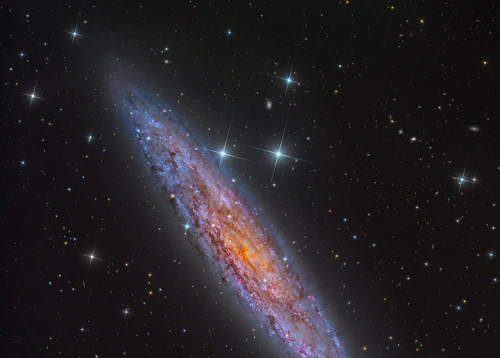Contents
- Welcome to a Stellar Masterpiece: The Sculptor Galaxy
- Overview of the Sculptor Galaxy
- Formation and Evolution
- Observing the Sculptor Galaxy
- Mysterious Phenomena
- Future Exploration and Research
- Conclusion
-
Frequently Asked Questions
- 1. What is the distance between the Sculptor Galaxy and Earth?
- 2. Who discovered the Sculptor Galaxy?
- 3. How big is the Sculptor Galaxy?
- 4. What gives the Sculptor Galaxy its distinct shape?
- 5. Are there any unique features in the Sculptor Galaxy?
- 6. Can the Sculptor Galaxy be seen with the naked eye?
- 7. Is the Sculptor Galaxy part of a larger galaxy cluster?
- 8. Is star formation active in the Sculptor Galaxy?
- 9. Has any supernova explosion been observed in the Sculptor Galaxy?
- 10. What is the significance of studying the Sculptor Galaxy?
- References
-
Frequently Asked Questions
- 1. How far is the Sculptor Galaxy from Earth?
- 2. Who discovered the Sculptor Galaxy?
- 3. How big is the Sculptor Galaxy?
- 4. What are the unique features of the Sculptor Galaxy?
- 5. Can the Sculptor Galaxy be seen with the naked eye?
- 6. What is the main hypothesis for the formation of the Sculptor Galaxy?
- 7. How does star formation occur in the Sculptor Galaxy?
- 8. What are the ways to observe the Sculptor Galaxy?
- 9. What are some of the mysterious phenomena associated with the Sculptor Galaxy?
- 10. What future space missions and research are planned for the Sculptor Galaxy?
- References
- Read More
Welcome to a Stellar Masterpiece: The Sculptor Galaxy
Prepare to be mesmerized by the enchanting beauty of the Sculptor Galaxy, a celestial masterpiece that stuns astronomers and stargazers alike. This awe-inspiring galaxy, also known as NGC 253, beckons us into the vast depths of the universe with its captivating allure. Situated in the southern constellation of Sculptor, this spiral galaxy has captured the imagination of scientists with its intricate features and mysterious phenomena. In this article, we will delve into the intriguing aspects of the Sculptor Galaxy, from its location and discovery to its formation and evolution. We will also explore the methods of observing this cosmic wonder and uncover the secrets it holds. So, let us embark on a celestial journey and uncover the marvels of the Sculptor Galaxy.
Overview of the Sculptor Galaxy
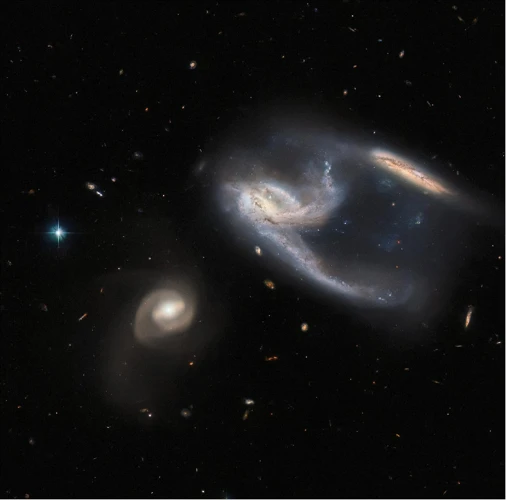
Inside the vast expanse of the cosmos lies the wondrous Sculptor Galaxy, a cosmic masterpiece that has captivated astronomers throughout history. Situated in the southern constellation of Sculptor, this celestial gem was discovered by Caroline Herschel in 1783. With a distance of approximately 11.4 million light-years from Earth, the Sculptor Galaxy stands out as one of the closest spiral galaxies to our own Milky Way. Spanning an impressive diameter of around 70,000 light-years, this grand celestial structure showcases striking features, including its elongated shape and prominent spiral arms adorned with bright regions of hot, young stars. Additionally, it possesses a distinctive dusty disk, known as a galactic halo, which encircles its center in a mesmerizing display. The Sculptor Galaxy takes its name from the ancient constellation Sculptor, which represents the tools of a sculptor. In this lesser-known constellation, the Sculptor Galaxy shines as a prominent highlight, inviting astronomers to uncover the secrets of its cosmic tapestry. So, let us dive deeper into the enigmatic wonders of the Sculptor Galaxy, where stellar beauty knows no bounds.
1. Location and Discovery
Located in the southern constellation of Sculptor, the Sculptor Galaxy, also known as NGC 253, has a fascinating history of discovery. Caroline Herschel, a prominent astronomer, first spotted this celestial gem in 1783. Situated approximately 11.4 million light-years away from Earth, it holds a prominent position as one of the closest spiral galaxies to our Milky Way. Its coordinates in the night sky lie at a right ascension of 0h 48m 23s and a declination of -25° 17’ 18”. The Sculptor Galaxy’s discovery brought attention to the lesser-known constellation Sculptor, which represents the tools of a sculptor. This region of the celestial sphere now shines brightly with the stellar marvel that is the Sculptor Galaxy. With its breathtaking beauty and intriguing features, it serves as a testament to the wonders that lie beyond our galaxy’s boundaries. To learn more about the fascinating intricacies of other constellations, check out our article on lesser-known constellation facts.
2. Physical Characteristics
The Sculptor Galaxy mesmerizes with its impressive physical characteristics that make it a celestial wonder to behold. This spiral galaxy boasts a diameter of approximately 70,000 light-years, making it comparable in size to our own Milky Way. Its magnificent spiral arms extend outward, adorned with an intricate tapestry of stars, gas, and dust. Within these arms, the Sculptor Galaxy showcases noticeable patches of bright, young stars, signifying active star formation taking place. Its central region, known as the galactic core, exhibits a higher concentration of stars, contributing to its luminosity and mesmerizing glow.
The Sculptor Galaxy is also known for its distinctive galactic halo, which is a flattened disk of dust that surrounds its central region. This halo contributes to the galaxy’s overall appearance, giving it a captivating and ethereal beauty. Deep within the halo, astronomers have discovered regions of intense star formation, where vast clouds of gas and dust collapse under their own gravitational pull to create new generations of stars.
Additionally, the Sculptor Galaxy possesses a supermassive black hole at its center, with a mass estimated to be around 20 million times that of our Sun. This powerful cosmic entity has a gravitational pull that influences the motion of surrounding stars, shaping the galaxy’s structure and dynamics.
The Sculptor Galaxy’s physical characteristics demonstrate the intricate interplay between stars, gas, dust, and massive black holes that contribute to the grandeur and complexity of this cosmic masterpiece. As we continue to explore and unravel the mysteries of this celestial jewel, we gain a deeper understanding of the vast celestial phenomena that exist within our universe.
3. Unique Features
The Sculptor Galaxy dazzles with its unique features that set it apart from other galaxies in the cosmos. One remarkable aspect is its intense starburst activity, resulting in a high rate of star formation. This stellar nursery gives rise to clusters of young, hot stars that illuminate the galaxy’s spiral arms, painting a breathtaking celestial canvas. Additionally, the Sculptor Galaxy boasts a prominent central bar structure, known as a barred spiral galaxy. This feature distinguishes it from regular spiral galaxies and adds to its distinctive appearance. This galaxy is rich in interstellar material, including vast clouds of gas and dust that serve as the building blocks for future star formation. The presence of these interstellar clouds contributes to the Sculptor Galaxy’s intricate and intricate structure. Another fascinating aspect is the presence of unique stellar streams, which are elongated trails of stars that extend beyond the main galactic disk. These streams are believed to be the result of past interactions with neighboring galaxies. Studying these unique features provides insights into the ongoing processes of cosmic evolution and the intricate dance between galaxies in the universe. So, delve into the wonders of the Sculptor Galaxy and witness the extraordinary marvels it holds: a celestial jewel waiting to be discovered.
Formation and Evolution
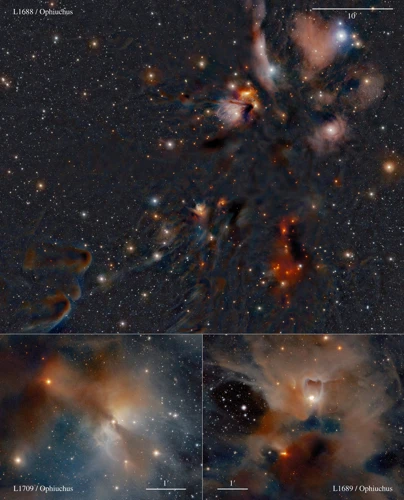
The formation and evolution of the Sculptor Galaxy have been subjects of great interest and ongoing research among astronomers. One hypothesis regarding its formation suggests that the Sculptor Galaxy was brought about by a galactic collision with a smaller dwarf galaxy millions of years ago. This collision would have triggered intense gravitational interactions, causing gas and dust clouds to compress and collapse, giving rise to the formation of new stars. Another possibility is that the Sculptor Galaxy has undergone a prolonged period of steady star formation, gradually shaping its distinctive spiral arms and structure. Over time, these newly formed stars have played a crucial role in sculpting the galaxy’s appearance and overall evolution through their stellar winds and explosive supernova events. The dense concentration of stars in the Sculptor Galaxy’s central region suggests a robust population of older stars, while the presence of younger, blue stars in its spiral arms points to ongoing star formation. Truly, the Sculptor Galaxy’s journey through time and space has unfolded in a mesmerizing dance of cosmic processes, giving birth to its breathtaking and enigmatic features. As scientists continue to unravel the mysteries of galactic evolution, the Sculptor Galaxy serves as a captivating case study in understanding the dynamic nature of our universe.
1. Galactic Collision Hypothesis
Numerous hypotheses have emerged to explain the formation and evolution of the Sculptor Galaxy, and one compelling theory is the Galactic Collision Hypothesis. This hypothesis suggests that the Sculptor Galaxy underwent a dramatic encounter with another galaxy in the past, resulting in its unique structure and characteristics. Scientists propose that a smaller, companion galaxy approached the Sculptor Galaxy, triggering a gravitational interaction that led to a celestial dance of cosmic forces. The immense gravitational forces generated by this interaction caused tidal forces to distort the shape of the galaxies, resulting in the elongated and asymmetric features observed today. The collision also likely induced a burst of intense star formation within the Sculptor Galaxy, leading to the formation of massive, young, and luminous stars. As astronomers continue to investigate the Sculptor Galaxy’s history through observations and simulations, this captivating hypothesis sheds light on the dynamic nature of galaxies in our vast universe. (For more information on celestial jewels, explore our article on the Ring Nebula.)
2. Star Formation and Stellar Population
The Sculptor Galaxy is a fascinating cosmic realm where stars are born and thrive. The galaxy’s unique environment provides the perfect conditions for star formation, resulting in a diverse population of stellar objects. Within the Sculptor Galaxy, massive clouds of gas and dust known as nebulae serve as the stellar nurseries where new stars are born. These nebulae, such as the Swan Nebula and the Tarantula Nebula, house vast amounts of hydrogen gas and dust particles. Gravitational forces, often triggered by galactic interactions or supernova explosions, cause these nebulae to collapse, leading to the formation of dense cores. As these cores contract under their own gravity, they accumulate more matter, eventually reaching a critical point where nuclear fusion ignites. The intense heat and pressure at the core initiate the birth of a new star, shining brightly against the backdrop of the galactic tapestry. The Sculptor Galaxy boasts a rich variety of stellar populations, including massive blue stars, red supergiants, and even younger stars in the open star clusters scattered throughout its spiral arms. These stellar populations not only contribute to the galaxy’s aesthetic beauty but also provide valuable insights into its evolutionary history. By studying the distribution and characteristics of different types of stars within the Sculptor Galaxy, astronomers can unravel the complex interplay between star formation, galactic dynamics, and the intricate web of cosmic forces that shape our universe. So, let us explore the vibrant stellar landscape of the Sculptor Galaxy, where stars are born and the mysteries of the cosmos come to life.
Observing the Sculptor Galaxy
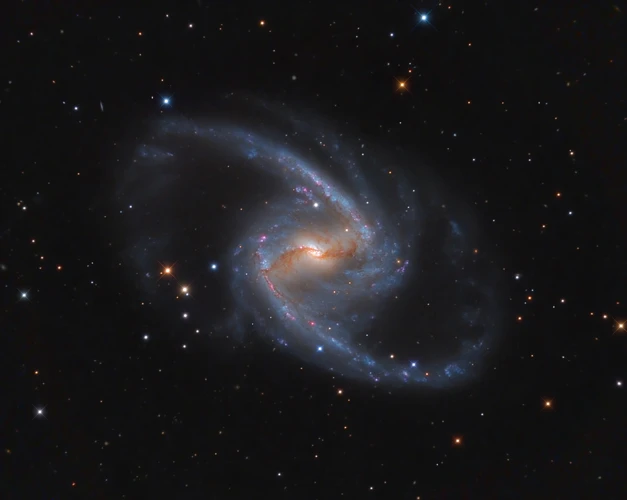
When it comes to witnessing the ethereal beauty of the Sculptor Galaxy, astronomers are presented with various methods and instruments to explore this celestial masterpiece. Let’s delve into the different ways in which we can observe and study this captivating cosmic wonder.
- Telescopes and Instruments: To observe the Sculptor Galaxy in detail, astronomers rely on powerful telescopes equipped with advanced instruments. Large aperture telescopes, such as the Hubble Space Telescope, provide high-resolution images, allowing scientists to study the intricate structures and features of this stellar masterpiece. Additionally, ground-based observatories equipped with adaptive optics technology can compensate for atmospheric distortions, delivering even clearer views of the galaxy.
- Visual Observation: Although the Sculptor Galaxy may appear as a faint smudge to the naked eye, it can be observed using small telescopes or binoculars from dark sky locations. By locating the constellation Sculptor and identifying its position, amateur astronomers can catch a glimpse of this captivating cosmic beauty, particularly in areas with minimal light pollution.
- Astrophotography: To truly capture the grandeur of the Sculptor Galaxy, astrophotography is a popular and rewarding method. By using specialized astrophotography equipment, photographers can take long-exposure images of the galaxy, revealing its intricate spiral arms, bright star clusters, and dust lanes. These stunning images not only serve as visual marvels but also provide valuable data for scientific research and study.
Observing the Sculptor Galaxy allows us to witness the celestial artwork that nature has crafted millions of light-years away. Whether through the lens of advanced telescopes or the eyes of amateur astronomers, the Sculptor Galaxy continues to fascinate and inspire us, unraveling the mysteries of the universe.
1. Telescopes and Instruments
Telescopes and instruments play a vital role in observing and studying the captivating Sculptor Galaxy. Astronomers utilize a range of advanced technologies to explore this celestial masterpiece in unprecedented detail. High-powered telescopes, such as the Hubble Space Telescope, allow scientists to capture breathtaking images of the Sculptor Galaxy, revealing its intricate structure and stellar population. Additionally, ground-based observatories equipped with cutting-edge instruments, such as spectrographs and multi-wavelength detectors, enable scientists to analyze the galaxy’s chemical composition, temperature, and other physical properties. The use of adaptive optics helps compensate for atmospheric disturbances, allowing for clearer imaging. Radio telescopes, like the Atacama Large Millimeter/submillimeter Array (ALMA), offer a glimpse into the colder regions of the galaxy, unveiling the presence of molecular clouds and star-forming regions. With the aid of these powerful tools, astronomers can unravel the secrets of the Sculptor Galaxy and deepen our understanding of the celestial wonders that lie within.
2. Visual Observation
Visual observation of the Sculptor Galaxy is a treat for amateur astronomers and stargazers. With a modest-sized telescope, one can catch a glimpse of this celestial wonder in all its resplendent glory. Located in the southern hemisphere, the Sculptor Galaxy can be observed during the late night hours in autumn and winter. To enhance the viewing experience, it is advisable to find a location away from light pollution. Once the galaxy is in view, observers will be greeted by a faint glow, gradually revealing its spiral structure, elongated shape, and intricate dust lanes. The central region, also known as the core, appears brighter and more concentrated, teeming with a myriad of stars. Patient observers may even catch sight of individual star clusters within the spiral arms, adding to the allure of this cosmic masterpiece. It is important to note that visual observation alone cannot uncover all the intricate details of the Sculptor Galaxy. To truly appreciate its beauty and unravel its mysteries, astronomers rely on advanced technologies and instruments, such as telescopes equipped with spectrographs and imaging systems. However, there is a certain charm in observing this celestial artwork through the lens of a telescope, allowing one to develop a personal connection with the grandeur of the Sculptor Galaxy. So, grab your telescope and embark on a visual journey to witness the splendor that lies within the Sculptor Galaxy, deep in the realms of the southern skies.
3. Astrophotography
Capturing the awe-inspiring beauty of the Sculptor Galaxy through astrophotography is a dream come true for many enthusiastic stargazers and professional astronomers. With advancements in technology and the availability of powerful telescopes and imaging equipment, astrophotography offers a unique opportunity to bring the distant cosmos closer to us. To photograph the Sculptor Galaxy, astronomers utilize specialized cameras, such as CCD or CMOS, which are highly sensitive to the faint light emitted by celestial objects. These cameras are often coupled with telescopes equipped with various filters to isolate specific wavelengths of light and enhance details in the captured images.
One popular technique employed in astrophotography is long-exposure imaging. By taking prolonged exposures of several minutes or even hours, photographers can accumulate more light and reveal intricate details within the Sculptor Galaxy. These long-exposure images bring out the vibrant colors of the galaxy’s spiral arms and highlight the hot, young stars interspersed throughout. To minimize the effects of light pollution, astrophotographers often travel to remote and dark locations or use light pollution filters to ensure optimal image quality.
Astrophotography of the Sculptor Galaxy also allows us to explore its unique features, such as its galactic halo and the presence of dust lanes that traverse its spiral arms. These features add depth and character to the captured images, providing a glimpse into the complex nature of this celestial masterpiece. Additionally, astrophotographers may employ image processing techniques to enhance the captured photos further. From adjusting brightness and contrast to applying specialized algorithms like deconvolution, these processes help reveal even more intricate details within the Sculptor Galaxy.
In the realm of astrophotography, the Sculptor Galaxy presents an enticing subject that challenges photographers to push the limits of their equipment and skills. Its intricate features and celestial allure make it a tantalizing target for photographers seeking to capture the wonders of our universe. So, if you find yourself captivated by the beauty of the Sculptor Galaxy, grab your camera, find a dark sky location, and let your astrophotography skills unveil the stellar masterpiece that lies millions of light-years away.
(Astrophotography can also be combined with the use of telescopes equipped with filters specifically designed for capturing deep-sky objects like the Sculptor Galaxy. To learn more about telescopes and instruments used in astrophotography, check out our detailed guide on successful relationships with Ophiuchus.)
Mysterious Phenomena
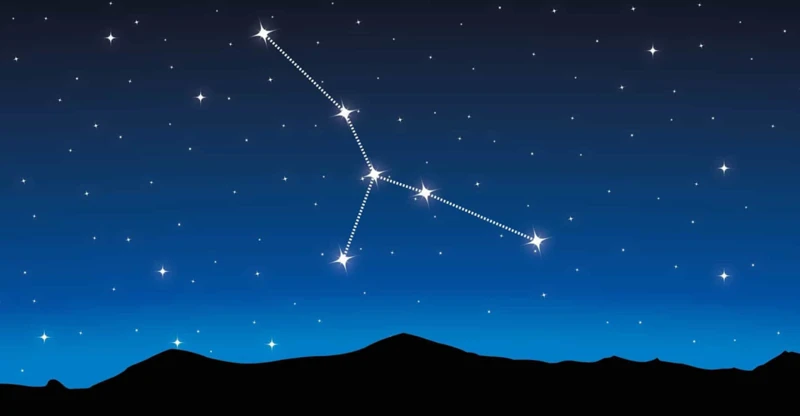
The Sculptor Galaxy not only showcases its breathtaking beauty but also conceals a host of mysterious phenomena that continue to intrigue scientists. One such phenomenon is the occurrence of supernova explosions within its stellar population. Supernovae are grand cosmic events that mark the explosive deaths of massive stars, releasing an immense amount of energy and scattering heavy elements into the surrounding space. The Sculptor Galaxy has witnessed several of these dramatic events, with the most recent supernovae occurring in 2008 and 2018. These explosive spectacles provide astronomers with valuable insights into stellar evolution and the dynamics of the galaxy itself. Another intriguing phenomenon associated with the Sculptor Galaxy is the presence of high-velocity stars. These stars travel at astonishing speeds, often exceeding the average velocity of stars within the galaxy. The origin of these high-velocity stars remains a mystery, but scientists speculate that they may have been ejected from a close encounter with a supermassive black hole or a gravitational interaction with another galaxy. Lastly, the Sculptor Galaxy is believed to house a significant amount of dark matter. Dark matter is an elusive substance that does not emit, absorb, or reflect light, making it difficult to directly observe. However, its presence can be inferred through its gravitational effects on visible matter. Studies of the Sculptor Galaxy indicate that dark matter makes up a substantial portion of its total mass, playing a crucial role in shaping the galaxy’s structure and dynamics. These mysterious phenomena within the Sculptor Galaxy continue to challenge our understanding of the cosmos and inspire further research and exploration.
1. Supernova Explosions
Supernova explosions within the Sculptor Galaxy are awe-inspiring events that leave a lasting impact on the cosmic landscape. These powerful explosions mark the dramatic end of a massive star’s life, releasing an enormous amount of energy and light. The Sculptor Galaxy has been the stage for several of these galactic fireworks, with multiple supernovae occurring throughout its history. These stellar explosions occur when a massive star collapses under its own gravity, triggering a cataclysmic explosion that blasts outer layers into space. The resulting explosion shines brightly, sometimes outshining the entire galaxy, before gradually fading away. These cosmic events play a crucial role in the universe, enriching surrounding regions with heavy elements and triggering the formation of new stars and planetary systems. Studying supernovae within the Sculptor Galaxy offers valuable insights into the life cycles of massive stars and the vast cosmic ecology at play. Such explosively grand phenomena remind us of the mesmerizing beauty and relentless energy coursing through the universe.
2. High-velocity Stars
The Sculptor Galaxy harbors a peculiar phenomenon known as high-velocity stars, which are stars that exhibit exceptionally fast speeds compared to their surrounding stellar population. These stars are believed to have been ejected from their original positions within the galaxy and are now hurtling through space at incredible velocities. The exact mechanisms behind their ejection are still not fully understood, but scientists speculate that close encounters with other stars or gravitational interactions with massive objects such as black holes or dense stellar clusters may play a significant role in their expulsion.
These high-velocity stars bring a sense of dynamism to the Sculptor Galaxy, creating a celestial ballet of motion and energy. They add to the rich tapestry of stellar diversity within the galaxy, showcasing the complexities of its gravitational dynamics. Studying these stars provides valuable insights into the interplay between gravitational forces, stellar evolution, and the overall structure of galaxies.
To identify and study high-velocity stars, astronomers employ various observational techniques. One such method is spectroscopy, which allows scientists to analyze the wavelengths of light emitted by these stars. By studying the Doppler shift in the spectra, astronomers can determine the speed at which the stars are moving away from or towards us. Additionally, high-resolution imaging techniques provide a closer look at the morphology and kinematics of these stars, shedding light on their origins and trajectories.
The presence of high-velocity stars within the Sculptor Galaxy provides a fascinating avenue for further research. Their study not only contributes to our understanding of the dynamics of galaxies but also offers a glimpse into the intricate mechanisms of stellar evolution. As astronomers continue to delve into the mysteries of high-velocity stars, the Sculptor Galaxy stands as a captivating backdrop for unraveling the secrets of the cosmos.
3. Dark Matter Presence
Deep within the heart of the Sculptor Galaxy lies a captivating mystery: the presence of dark matter. Dark matter, an elusive and enigmatic substance, is believed to make up a substantial portion of the total mass of the universe. Scientists have long been puzzled by the nature of dark matter, as it does not interact with light or other forms of electromagnetic radiation. However, its presence can be inferred through its gravitational effects on visible matter.
In the case of the Sculptor Galaxy, extensive studies and observations have led scientists to conclude that dark matter plays a significant role in shaping this stellar masterpiece. The gravitational pull of dark matter helps to shape the distribution and movements of stars within the galaxy. Through a combination of computer simulations and observational data, scientists have been able to map out the invisible presence of dark matter in the Sculptor Galaxy.
One intriguing aspect of the dark matter presence in the Sculptor Galaxy is its influence on the rotation of the galaxy. Detailed studies have revealed that the rotation curve of the galaxy, which measures the orbital velocities of stars at different distances from the galactic center, deviates from what would be expected based solely on the visible matter. This suggests the presence of additional mass, attributed to dark matter, which helps to maintain the observed rotation dynamics of the galaxy.
While the exact nature of dark matter remains a tantalizing mystery, its presence within the Sculptor Galaxy provides a fascinating avenue for further research and exploration. Scientists continue to refine their understanding of dark matter through ongoing observations and theoretical models, probing deeper into this cosmic enigma. The Sculptor Galaxy stands as a testament to the profound influence of dark matter and inspires astronomers to unlock the secrets of this invisible cosmic entity.
The Sculptor Galaxy not only enthralls us with its breathtaking beauty but also captivates our curiosity with the presence of dark matter. This mysterious substance permeates the galaxy, shaping its structure and influencing its dynamics. As we continue to delve into the depths of the Sculptor Galaxy and study its dark matter presence, we move closer to unraveling the secrets of the cosmos and gaining a deeper understanding of the universe in which we reside.
Future Exploration and Research
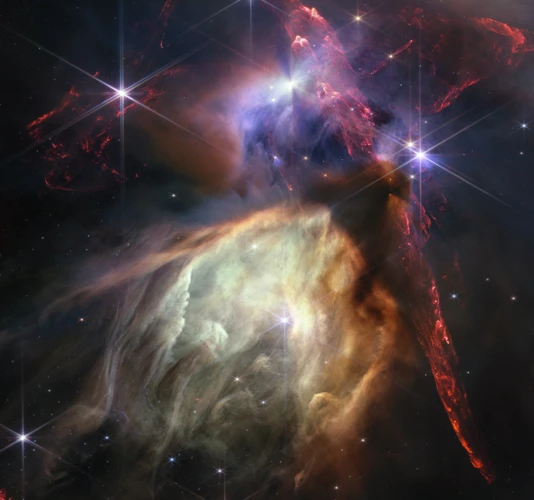
As we continue to expand our understanding of the cosmos, the Sculptor Galaxy offers a wealth of opportunities for future exploration and research. Scientists and astronomers are eagerly anticipating upcoming space missions that will shed further light on the mysteries hidden within this celestial masterpiece. One such mission is the James Webb Space Telescope (JWST), set to launch in 2021. With its advanced capabilities, the JWST will peer into the depths of the Sculptor Galaxy, providing unprecedented views and detailed observations of its stellar populations, star-forming regions, and possible exoplanets within its boundaries.
In addition to space missions, advancements in astronomical techniques hold promise for unraveling the complexities of the Sculptor Galaxy. Innovative approaches in adaptive optics, which correct for distortions caused by Earth’s atmosphere, will enable astronomers to obtain sharper and clearer images of distant galaxies, enhancing our understanding of their structures and dynamics. The implementation of multi-wavelength observations, utilizing different bands of the electromagnetic spectrum, will allow scientists to study various aspects of the Sculptor Galaxy in greater detail, from its gas composition to its dark matter content.
Collaborations between ground-based observatories and space telescopes will also contribute to future research endeavors. By combining data from different observatories, astronomers can create comprehensive and detailed maps of the Sculptor Galaxy, enabling a deeper exploration of its spiral arms, stellar clusters, and interstellar dust clouds. These collaborative efforts will pave the way for breakthrough discoveries and a deeper understanding of the galaxy’s formation, evolution, and interactions with its environment.
As technology continues to advance, our exploration of the Sculptor Galaxy will expand, revealing new insights into the intricate systems and phenomena that make up this stellar masterpiece. The future holds remarkable potential for unlocking the secrets of this celestial gem, and scientists are poised to embark on a new era of discovery within the mesmerizing confines of the Sculptor Galaxy.
1. Upcoming Space Missions
Excitingly, the future promises remarkable advancements in exploring the Sculptor Galaxy through upcoming space missions. Scientists and astronomers, filled with curiosity, are eagerly preparing for new ventures that will unveil deeper insights into this stellar masterpiece. One such mission is the James Webb Space Telescope (JWST), set to launch in the near future. With its advanced capabilities and powerful instruments, the JWST aims to observe the Sculptor Galaxy with unprecedented clarity, offering a front-row seat to unravel the mysteries of its formation, evolution, and unique features. The JWST’s impressive resolution and sensitivity will enable scientists to study the galaxy’s star formations, stellar populations, and the presence of dark matter with greater precision and accuracy. This upcoming mission, along with others on the horizon, holds the promise of expanding our knowledge of the Sculptor Galaxy and pushing the boundaries of our understanding of the universe. The future is undoubtedly bright for those awaiting the next chapter in our exploration of this celestial wonder.
2. Advanced Astronomical Techniques
Advanced astronomical techniques are revolutionizing our understanding of the Sculptor Galaxy and pushing the boundaries of scientific exploration. Researchers are employing a wide array of cutting-edge tools and methodologies to delve into the intricate details of this cosmic wonder. One such technique is Adaptive Optics (AO), which compensates for the blurring effects of Earth’s atmosphere, allowing for clearer and sharper observations. By using deformable mirrors and real-time wavefront measurements, astronomers can mitigate atmospheric distortions and capture unprecedented details of the Sculptor Galaxy’s structure. Another groundbreaking technique is Very Long Baseline Interferometry (VLBI). With this technique, telescopes from around the world are synchronized to create a virtual Earth-sized telescope, providing incredibly high-resolution images of distant objects, including the Sculptor Galaxy. This allows astronomers to analyze the galaxy’s morphology, study its dynamic processes, and investigate the presence of black holes at its center. Spectroscopy plays a vital role in understanding the composition and properties of the Sculptor Galaxy. By analyzing the interaction of light with matter, astronomers can determine the galaxy’s elemental composition, temperature, and velocity. Spectroscopic observations also provide valuable insights into the formation and evolution of stars within this celestial masterpiece. As technology continues to advance, new astronomical techniques like these and others, such as multi-wavelength observations and gravitational wave detection, hold immense promise for unraveling the mysteries of the Sculptor Galaxy and the broader universe. The discoveries made using these advanced techniques pave the way for future exploration and expand our knowledge of the cosmos.
Conclusion

In conclusion, the Sculptor Galaxy stands tall as a mesmerizing stellar masterpiece that continues to intrigue and inspire astronomers. From its location and discovery in the constellation of Sculptor to its physical characteristics and unique features, this celestial wonder never fails to captivate our imaginations. The formation and evolution of the Sculptor Galaxy, with its galactic collision hypothesis and diverse stellar population, further deepens our understanding of the universe’s grand design. Observing the Sculptor Galaxy through telescopes and instruments, engaging in visual observation or astrophotography, opens up a whole new realm of discovery and appreciation. Its mysterious phenomena, including supernova explosions, high-velocity stars, and the presence of dark matter, heighten our curiosity and provide fertile ground for future research. As we look to the future, upcoming space missions and advanced astronomical techniques promise to unveil even more secrets hidden within the Sculptor Galaxy. So, let us continue the quest for knowledge and exploration, as we marvel at the majesty and splendor of this celestial work of art.
Frequently Asked Questions

1. What is the distance between the Sculptor Galaxy and Earth?
The Sculptor Galaxy is located approximately 11.4 million light-years away from Earth.
2. Who discovered the Sculptor Galaxy?
The Sculptor Galaxy was discovered by Caroline Herschel in 1783.
3. How big is the Sculptor Galaxy?
The Sculptor Galaxy has a diameter of around 70,000 light-years, making it approximately two-thirds the size of our Milky Way galaxy.
4. What gives the Sculptor Galaxy its distinct shape?
The Sculptor Galaxy’s elongated shape and prominent spiral arms are a result of its gravitational interactions with neighboring galaxies.
5. Are there any unique features in the Sculptor Galaxy?
Yes, the Sculptor Galaxy exhibits a central dusty disk, known as a galactic halo, which adds to its mesmerizing appearance.
6. Can the Sculptor Galaxy be seen with the naked eye?
No, the Sculptor Galaxy is not visible to the naked eye. It requires a telescope to observe its beauty.
7. Is the Sculptor Galaxy part of a larger galaxy cluster?
Yes, the Sculptor Galaxy is a member of the Sculptor Group, a small galaxy cluster that includes several other galaxies.
8. Is star formation active in the Sculptor Galaxy?
Yes, the Sculptor Galaxy contains regions of active star formation, with bright and young stars dotting its spiral arms.
9. Has any supernova explosion been observed in the Sculptor Galaxy?
Yes, several supernova explosions have been detected in the Sculptor Galaxy over the years, adding to its dynamic nature.
10. What is the significance of studying the Sculptor Galaxy?
Studying the Sculptor Galaxy provides valuable insights into the processes of galaxy formation, evolution, and the presence of dark matter within galaxies.
References
Frequently Asked Questions

1. How far is the Sculptor Galaxy from Earth?
The Sculptor Galaxy, also known as NGC 253, is located approximately 13 million light-years away from Earth.
2. Who discovered the Sculptor Galaxy?
The Sculptor Galaxy was first discovered by the German-British astronomer Caroline Herschel in 1783.
3. How big is the Sculptor Galaxy?
The Sculptor Galaxy has a diameter of about 70,000 light-years, making it slightly smaller than our own Milky Way galaxy.
4. What are the unique features of the Sculptor Galaxy?
The Sculptor Galaxy is known for its irregular shape and its prominent spiral arms, which are rich in star formation. It also contains a central bar structure and a bright core.
5. Can the Sculptor Galaxy be seen with the naked eye?
No, the Sculptor Galaxy is not visible to the naked eye. It requires a telescope to observe due to its distance from Earth and its relatively low brightness.
6. What is the main hypothesis for the formation of the Sculptor Galaxy?
The main hypothesis suggests that the Sculptor Galaxy was formed through a collision or interaction with another galaxy, possibly a smaller companion galaxy.
7. How does star formation occur in the Sculptor Galaxy?
Star formation in the Sculptor Galaxy occurs primarily in its spiral arms, where gas and dust clouds collapse under gravity, forming young, hot stars.
8. What are the ways to observe the Sculptor Galaxy?
The Sculptor Galaxy can be observed using telescopes and instruments, through visual observation, and through astrophotography.
9. What are some of the mysterious phenomena associated with the Sculptor Galaxy?
Some mysterious phenomena associated with the Sculptor Galaxy include supernova explosions, high-velocity stars, and the presence of dark matter.
10. What future space missions and research are planned for the Sculptor Galaxy?
Upcoming space missions and advanced astronomical techniques are expected to further explore and study the Sculptor Galaxy, providing valuable insights into its formation and evolution.

